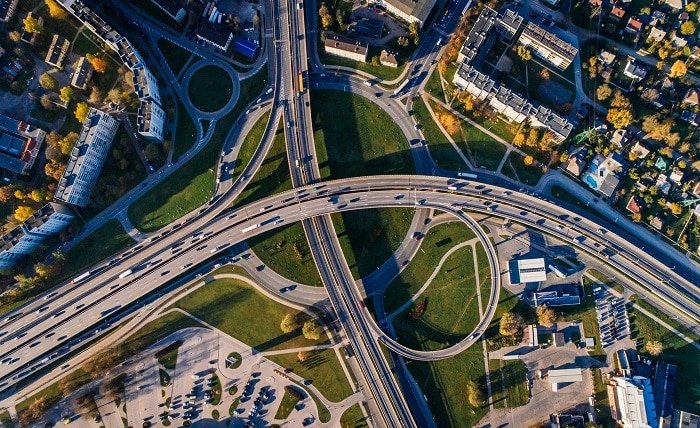How Infrastructure Projects Influence Real Estate Prices

Infrastructure development plays a crucial role in shaping real estate markets, often serving as a catalyst for property value appreciation. New roads, transit systems, commercial hubs, and public amenities can significantly impact housing demand and pricing in both urban and suburban areas. Understanding these dynamics can help buyers, investors, and policymakers make informed decisions about where and when to invest.
The Direct Impact of Infrastructure on Property Values
One of the most immediate effects of infrastructure projects is the increase in property values. When new highways, bridges, or rail systems are introduced, they enhance accessibility, making nearby areas more desirable for homeowners and businesses. Studies have shown that properties located near well-connected transport hubs often experience higher appreciation rates compared to those in less accessible areas.
For example, real estate markets in cities that have invested in metro expansions or high-speed rail systems typically see a surge in demand. The convenience of reduced commute times and improved connectivity can make neighborhoods more attractive to professionals and families alike. Those exploring townhouses for sale in Vaughan may find that properties near new transit developments gain value faster than those in less accessible locations.
Commercial and Retail Development
Infrastructure improvements also encourage commercial and retail growth, further influencing real estate markets. The construction of shopping centers, business districts, and entertainment hubs can transform previously underdeveloped areas into thriving communities. As job opportunities increase in these areas, so does the demand for nearby housing, driving up property prices.
A prime example is mixed-use developments, where residential, commercial, and office spaces coexist. These projects create self-sustaining communities where people can live, work, and shop within close proximity, boosting both the residential and commercial real estate sectors.
Public Amenities and Urban Livability
Beyond transportation and commercial developments, investments in public amenities such as parks, schools, hospitals, and cultural centers significantly enhance an area’s appeal. Neighborhoods with well-maintained green spaces and access to quality education and healthcare tend to attract higher buyer interest, leading to increased home values.
Improved infrastructure also reduces congestion and environmental concerns, making neighborhoods more livable. Modern urban planning initiatives focus on sustainability, promoting walkability and reducing reliance on personal vehicles, which in turn makes these areas more attractive to buyers and investors.
The Role of Government Policies and Funding
The effectiveness of infrastructure projects in boosting real estate prices often depends on government policies and funding. Public-private partnerships are increasingly being used to finance major developments, ensuring timely completion and long-term sustainability. Government-backed initiatives, such as tax incentives for developers and zoning reforms, can accelerate the pace of infrastructure expansion, directly influencing market dynamics.
Additionally, transit-oriented development (TOD) strategies have gained traction in many cities. These initiatives encourage high-density residential and commercial growth around transit hubs, fostering sustainable communities and attracting real estate investment. Buyers and investors should pay close attention to government plans and policies, as they often provide insights into future market trends.
Potential Downsides of Infrastructure Expansion
While infrastructure projects generally have positive effects on real estate prices, they can also lead to challenges. One major concern is the displacement of existing communities due to rising costs and gentrification. As property values increase, long-term residents may find it difficult to afford the rising taxes and living expenses, leading to demographic shifts.
Additionally, infrastructure construction can temporarily disrupt local markets. Large-scale projects often lead to noise pollution, traffic congestion, and business disruptions, which can deter potential buyers or renters in the short term. However, once completed, these projects usually contribute to long-term growth and stability.
Investing in Areas with Upcoming Infrastructure Projects
For real estate investors, identifying regions with planned infrastructure developments can present significant opportunities. Government announcements regarding transit expansions, road improvements, and commercial zoning changes can serve as indicators of future property appreciation.
Researching local urban planning reports, attending municipal meetings, and consulting real estate professionals can help buyers and investors stay ahead of market trends. Investing early in areas where infrastructure is set to improve can yield substantial returns over time. It is also essential to evaluate the long-term impact of these projects, ensuring they align with broader market trends and buyer demand.
The Impact on Rental Markets
Infrastructure projects do not only influence property ownership but also have significant effects on rental markets. Improved accessibility and enhanced urban amenities tend to attract a larger pool of renters, increasing demand for rental units. Investors who own properties in areas undergoing infrastructure upgrades may experience higher occupancy rates and rental income growth.
Additionally, short-term rental markets, such as those catering to business travelers and tourists, can benefit from improved transportation networks and commercial developments. Areas with new transit lines, airport expansions, or entertainment districts often see an influx of short-term rental demand, making them attractive investment locations.
Future-Proofing Investments with Infrastructure Insights
As cities continue to evolve, infrastructure development will remain a key driver of real estate growth. Buyers and investors should consider the long-term sustainability of infrastructure projects when making purchasing decisions. Ensuring that a location has access to reliable public transportation, quality amenities, and ongoing development plans can contribute to long-term property appreciation.
In addition to monitoring large-scale infrastructure projects, it is also essential to evaluate smaller community-driven initiatives. Streetscape improvements, bike lanes, and pedestrian-friendly developments can have a positive impact on neighborhood desirability, further boosting property values over time.
Final Thoughts
Infrastructure projects are among the most influential factors driving real estate market trends. From enhanced accessibility and commercial growth to improved urban livability, these developments create opportunities for homebuyers and investors alike. However, it’s essential to consider both the benefits and potential challenges that come with large-scale projects. Staying informed about upcoming infrastructure initiatives can help stakeholders make strategic decisions that align with long-term market trends. Whether investing in a developing area or buying a home near a transit hub, understanding how infrastructure influences real estate can lead to more informed and profitable decisions.




